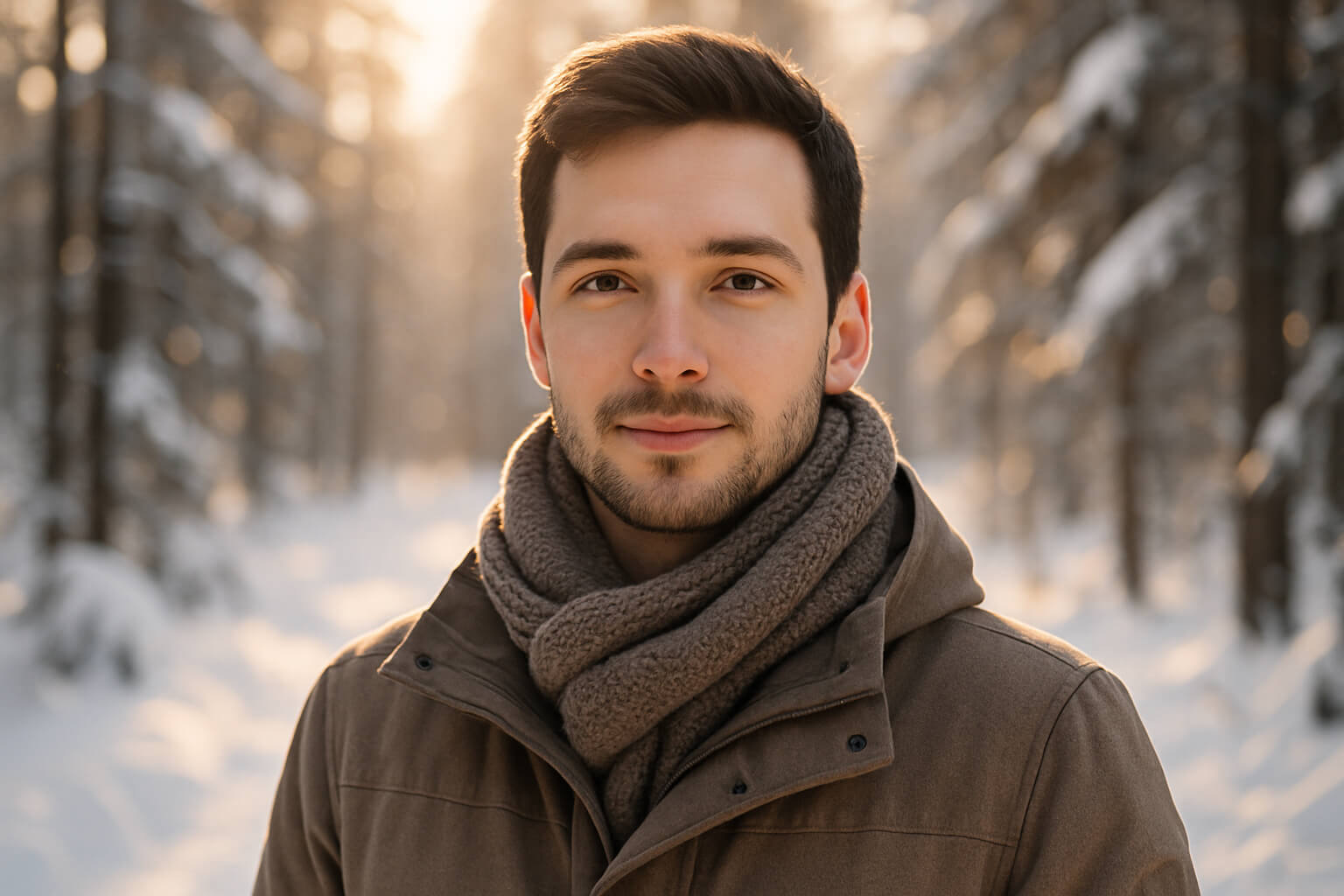June 06, 2025

Winter offers a unique, magical backdrop for portrait photography. The soft snow, crisp air, and muted colors can create stunning, ethereal portraits. However, shooting in cold, low-light conditions can present a set of challenges. Understanding how to adjust your camera settings for winter portraits is key to capturing beautiful, well-exposed images.
In this guide, we’ll walk you through the best camera settings for winter portrait photography and provide you with tips to help you make the most out of the season's unique conditions.
Winter scenes can be tricky for your camera’s exposure meter, especially when snow is involved. Snow reflects a lot of light, and your camera might interpret this as an overly bright scene, causing underexposed portraits. To ensure the correct exposure, you’ll need to adjust the exposure compensation.
Keep an eye on the histogram while shooting. If it shows too much information on the left (underexposed), you’ll know to increase your exposure compensation. This aligns with the tips shared in How to Optimize Your Photos for SEO and Social Media, as maintaining exposure can help your images perform better across platforms.
Winter landscapes are often breathtaking, with sweeping snow-covered fields or frosty trees. However, your primary focus will usually be your subject. To isolate your subject from the background and achieve a beautiful blurred effect (bokeh), use a wide aperture.
Using a wide aperture is especially useful in winter, where natural light can be limited due to overcast skies or early sunsets. When it comes to selling your photos online, an attractive portrait with a blurred background can make your images more marketable—How to Sell Your Photos Online for Passive Income in 2025 offers insight into maximizing the value of high-quality shots.
When shooting winter portraits, it's important to maintain a fast enough shutter speed to avoid motion blur. Whether your subject is standing still or moving, you want to make sure the photo is sharp, especially if you're shooting at wider apertures.
The key is to balance shutter speed and aperture so you don’t sacrifice one for the other—especially in low light. For those building their photography business, this is essential knowledge for capturing marketable, professional shots—check out How to Start a Photography Business from Scratch for tips on turning your winter portraits into a profitable venture.
Winter often means less sunlight, especially in colder climates where the days are short and the skies are overcast. When you're shooting portraits in these conditions, you'll need to increase your ISO to ensure proper exposure without using too slow of a shutter speed.
Be mindful of noise when raising your ISO too much. If you notice grainy images, try lowering the ISO and compensating with a slower shutter speed or wider aperture. If you're considering growing a photography business around winter portraits, make sure you’re ready to scale your photography business by checking out How to Scale a Photography Business and Go Full-Time.
Winter light can often have a cool, blue tone due to the reflection of the sky and snow. If you're aiming for natural skin tones and accurate colors, adjusting your white balance is essential.
If your portraits still appear too blue or cold after adjusting the white balance, you can warm them up in editing. To better understand how you can protect your images while editing, consider reading Photographer Editing and Protecting Copyrighted Photos.
In snowy conditions, focusing on your subject can be challenging due to the uniformity of the white background. You’ll want to make sure that the focus is on the eyes of your subject for a crisp, professional portrait.
Winter photography often involves shooting in bright, reflective conditions. Snow reflects a lot of light, which can cause unwanted glare and flaring in your shots.
Winter portraits can be challenging in terms of exposure, color balance, and detail. Shooting in RAW format will give you the flexibility to make adjustments in post-processing without sacrificing image quality.
For more guidance on optimizing your photos for post-production and online presence, refer to How to Optimize Your Photos for SEO and Social Media.
If you plan to monetize your winter portraits, Best Photo Selling Websites 2025 is a great resource for understanding where to sell your images online.
Winter portraits can be absolutely stunning, with a serene beauty that’s hard to replicate in other seasons. By adjusting your camera settings—especially exposure, aperture, and ISO—you can capture beautifully exposed and sharp portraits in any winter landscape. Experiment with the settings outlined above, and don’t forget to check the lighting and white balance for natural skin tones and accurate colors. Above all, have fun shooting and embrace the unique challenges and beauty that winter brings to portrait photography.
Stay up to date with the newest tips, gear reviews, and step-by-step guides to elevate your photography journey from home and beyond.